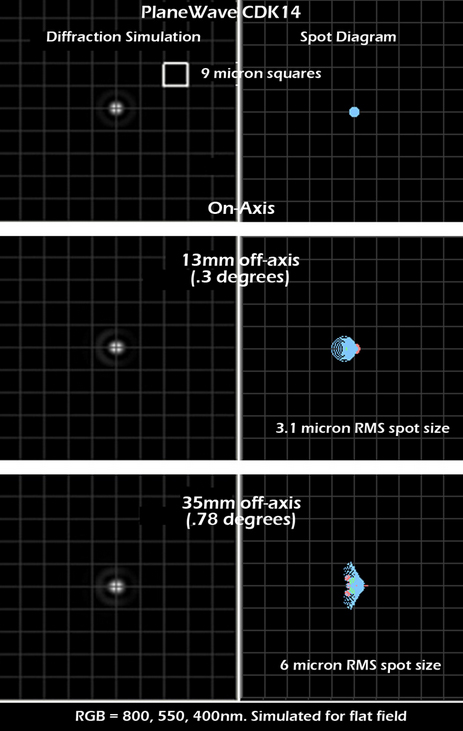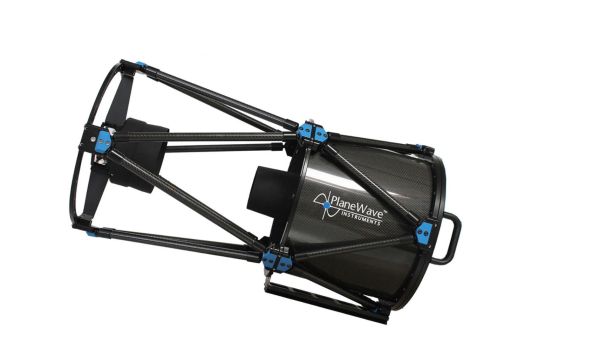PlaneWave Instruments CDK14 astrograph F/7.2 with fused silica optics
PlaneWave Instruments CDK14 astrograph F/7.2 with fused silica optics
The abbreviation CDK stands for the optical system of the PlaneWave astrographs - a Dall Kirkham Cassegrain with a optical correction unit. The result is a CDK 14" which is free from off-axis coma and off-axis astigmatism, yielding a perfectly flat field all the way out to the edge of a 70mm image circle.
- CDK14 Astrograph, 14 inch with Fused Silica Optics
- modified to Dall-Kirkham, with fully corrected image field
- 3" Dovetail, focal length 2.563 mm (f/7.2) and 70 mm field of view without any field curavature, off-axis coma, or astigmatism
- Delta T Ready, 3,5" Hedrick Focuser and EFA Kit separately available
- Requires a crating #1323514. The crating will be charged extra
Fused Silica is a synthetic amorphous silica glass of the highest purity and one of the most transparent glasses made. The optical and thermal properties of fused silica are superior to other types of glass due to its purity. Its transmission and homogeneity exceed those of crystalline quartz without the problems of temperature instability inherent in the crystalline form. Fused Silica has a coefficient of thermal expansion six times lower than Borosilicate (Pyrex) glass, which means that as fused silica cools down, it preserves its shape to a high degree of accuracy. This translates into consistent optical performance and unchanging focus over temperature changes. With its high melting temperature ()~ 1.600 degree Celsius), a very low coefficient of thermal expansion and resistance to thermal shock, fused silica is the material of choice for professional observatories as well as various scientific applications
Spot Diagram:
On the left column, the diagram shows a diffraction simulation for 14" CDK optics on the optical axis, and with a distance of 13- or 35mm to the optical axis. And the right column shows the calculated spot diagram. The small squares in the diagram are 9 micrometer (0.009 mm) wide.
The diameter of a star at the edge of the flat field corresponds to the pixel size of current large-format CCD chips and the imaging quality of the optics is limited only by the seeing conditions and the quality of the tracking. The large field of view of 70mm diameter offers enough tolerance for CCD cameras with ever larger chips - also for amateur astronomy.

Features:
| Product Status | New |
|---|---|
| Package width | 787 mm |
| Package height | 660 mm |
| Package depth | 1346 mm |
| No. of parcels | 1 |





